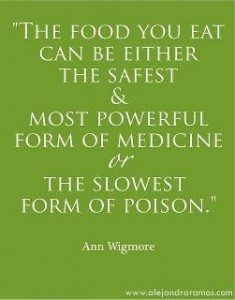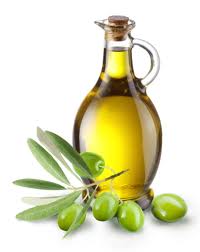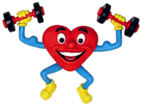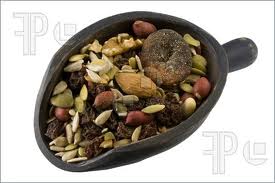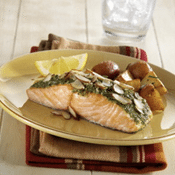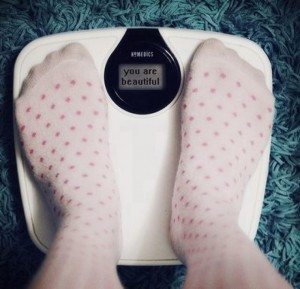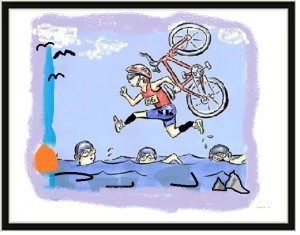The month of February triggers ideas of Valentine’s Day, love, and hearts. So in honor of your heart, feed your body heart healthy foods for a stronger and longer life. Heart healthy diets include a large variety of fruits and vegetables, extra fiber, omega-3 fats, low amounts of saturated and trans fat, and limited cholesterol. Read up for tips, facts, and fun!
HEART HEALTHY FEBRUARY
Red wine and other alcoholic beverages have been the subject of heart disease research. While the answers aren’t yet conclusive, it appears that moderate alcohol consumption may help reduce heart disease risk. This potential benefit is not a reason to start drinking. The research reports that moderate amounts of alcohol, one to two drinks per day, can help increase HDL cholesterol and may slow formation of LDL, the bad cholesterol. Alcohol consumption was part of a routine that included a low-fat eating plan and regular physical activity, two habits anyone can benefit from. Alcohol has its negatives too – increases the risk of cancer, and furthermore, be a spoke in the wheel to weight loss goals.
More and more research is looking at compounds in foods that may maximize health. Until research makes a positive conclusion, don’t deviate from the tried and consume a wide variety of natural foods meaning fruit, vegetables, whole grains, and lean sources of protein.
Here’s the NEWS:
A fact is a fact, and an important fact to note is that heart disease is the number one cause of death for men and women today in the United States.
Many factors play a part of heart failure, such as high blood pressure and cholesterol, lack of exercise, diabetes, alcohol abuse, and smoking.
Guess what?? These are all factors that you can help tackle in your daily agenda to strengthen your heart. By making a few adjustments, you can add years on to your life. Be conscious of the foods you choose to eat, quit smoking, and drink only 1-2 drinks per day at the most. Choose red wine instead of a beer, which will provide antioxidants to your diet. Instead of eating fast food on lunch break, pack a healthy delicious lunch, and ride a bike around the park instead of going to the movies and eating a bucket of popcorn.
Olive Oil
When one typically thinks of “fat”, misconstrued thoughts come to mind. In fact, the body needs fat, and we all know that food tends to taste better with a little added fat. When cooking, replace your butter and margarine with Extra Virgin Olive Oil and receive not only a tasty product, but also essential fatty acids that the body needs.
Olive oil is a natural juice and can be directly consumed after being pressed from the fruit. It has a high content of monounsaturated fatty acids and antioxidative substances thought to decrease the bad cholesterol and increase the good cholesterol offering protection against heart disease.
Key Nutrients and Food Sources:
- Omega 3 (Salmon, flaxseed, walnuts)
- Vitamin C (Oranges, apples, etc.)
- Fiber (whole wheat, brown rice, cereal, broccoli)
- B Vitamins (Meats)
- Flavonoids (antioxidants found in fruits, vegetables, and wine)
FITNESS CORNER
Studies show that by exercising for as little as 30 minutes a day, you can decrease risks of having heart problems!!
Your heart rate is the key to exercising at the right intensity (heart rate zone).
Some heart rate zones are more effective for burning fat, others for improving performance and stamina. Once you determine your fitness goals, a heart rate monitor will allow you to achieve them by helping you stay in your best heart training zone.

A general formula
for fat-burning mode:
75% – 80% of (220 – your age)
eg. For 33 year old: mid of range:
220 – 33 = 187;
75% of 187
is 140 beats/min
Need a Quick Snack?
Make your own TRAIL MIX, and pick your own ingredients for a healthy on-the-go snack with protein, healthy fats, antioxidants. Add:
- 1 cup unsalted sunflower seeds 1 cup peanuts,
- 1 cup dried fruit (cranberries, prunes, pears, etc.)
- ½ cup raisins
- ½ cup DARK chocolate chips.
========================================
Heart Healthy Delicious Recipe
It’s recommended to eat fish at least 2 times per week to lower blood pressure and triglycerides.
Salmon with Cilantro Pesto
- 4 Salmon Filets, rinsed and patted dry
- ¼ cup sliced almonds
Pesto:
- 1/2 cup loosely packed fresh cilantro
- 3 tablespoons fat-free, low-sodium chicken broth
- 2 tablespoons sliced almonds
- 2 tablespoons shredded or grated Parmesan cheese
- 1 teaspoon salt-free garlic-herb seasoning blend
Instructions:
Preheat the oven to 400°F. Line a baking sheet with aluminum foil or lightly spray with cooking spray. In a food processor or blender, process the pesto ingredients for 15 to 20 seconds, or until slightly chunky. Place the fillets about 2 inches apart on the baking sheet. Spread the pesto evenly over the top of the fillets. Sprinkle almonds on top. Bake for 10 to 12 minutes, or until the fish flakes easily when tested with a fork.
Nutritional Content Per Serving:
206 Calories, 9.5 gm Fat, 28 gm Protein, 66 mg Cholesterol, 129 mg Sodium
AND FOR A VALENTINE’S DESSERT ….
Decadent yet still healthy Dessert
(Chocolate Dipped Strawberries)
Ingredients
1 lb of medium-sized whole strawberries
4 ounces semi-sweet chocolate
Microwave chocolate in a glass bowl, stopping after 30 seconds, then every 10 seconds until almost melted. Stir until smooth and glossy. Wash strawberries and pat them dry (any moisture from the fruit will spoil the texture of the melted chocolate).Dip each strawberry into the melted chocolate, covering the lower half of the strawberry. Place on a baking sheet lined with wax paper. Refrigerate for at least 1 hour.
Per Strawberry: Calories 48, Fat 2g, Sat Fat 1.1g, Chol 0mg, Sodium 0mg. Carbohydrate 6.8g, Fiber 1.1g, Pro 0.5
HEALTHY VALENTINE DINNER SUGGESTION
Cook a simple but special low fat dinner for your Valentine instead of eating a high-fat, high calorie meal at an expensive restaurant. It’s well known that it’s easier to cook low fat at home than it is to eat low fat at many restaurants.
But if you’re a little nervous about making a special meal for your loved one, just remember to keep things as simple as possible. Valentine’s Day is probably not the best time to see if you can flambé bananas or try your first ever soufflé. Take advantage of the fact that many appetizers and desserts can be prepared ahead of time, so you don’t have to feel under so much pressure. If your sweetheart truly loves you, then serving his or her favorite (low fat) home-style dish by candlelight, with some mood-enhancing music in the background, may be all that’s needed for a memorable evening. (Follow the simple, healthy, delicious recipes in this addition to help complete the purrr-fectt, heart healthy meal.
HAVE A HEART HEALTHY FEBRUARY,
ILANA




